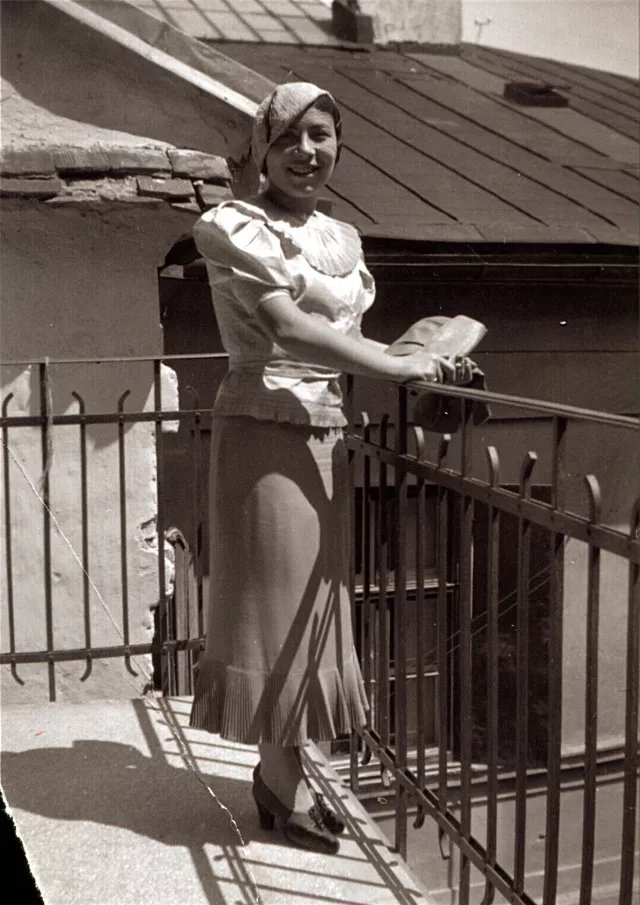Ferenc Pap's mother Vera Pap in front of their flat
My mother is in this picture, in May 1943, probably in Kolozsvar, or Cluj. The date [on the backside of the photo] is in the handwriting of my grandmother, my mother's mother. This is in the house we lived in at that time, [she is] in [front of] the kitchen. I think that my mother's dress is well, let's say it's a dime-a-dozen, not particularly elegant. In Bucharest as well as in Temesvar or Kolozsvar they weren't in a financial situation in which they could be eye-catching.
Before my birth they moved to Kolozsvar, sometime between 1931 and 1934. My mother had a school of choreography here, the so-called school of rhythmic dance and art gymnastics. My father was known in Kolozsvar - and he also introduced himself - as the husband of Vera Pap. This means that my mother, with her posters was more well-known, at least by name, than my father.
After a short time, from 1938, the three anti-Jewish laws were introduced in Hungary. They ousted the Jews step by step; they began with the artists and then they extended it to the others and brought other coercive measures. After 1938, she didn't have her dance-school any more.
In the summer of 1943 they took my father into the forced labour service. From that time on my mother looked after us; she invented a product, a masterpiece of fine workmanship. She had been preoccupied with industrial arts even as a child and she was in a terrible dilemma at that time: to choose to deal with industrial arts or to be a dancer. In the 1940's she took up her old knowledge of industrial arts and she made beach-bags. This was when plastic, the imitation of textile and leather, was brought to Hungary, and she made beach-bags and sold them in secret. And there was another thing; we let out one room to a lady who moved there with her daughters, and that's how we obtained the bare necessaries.













